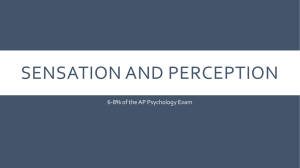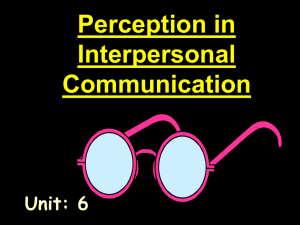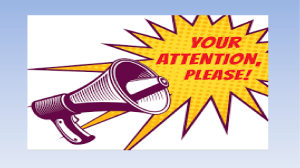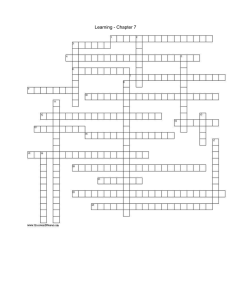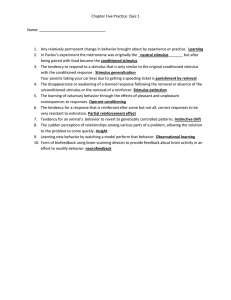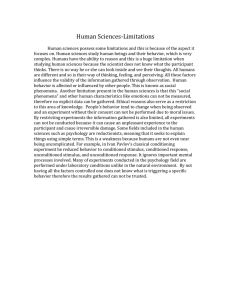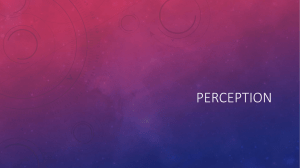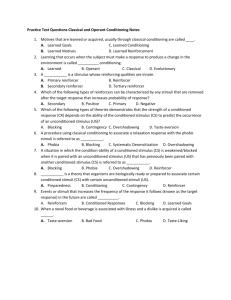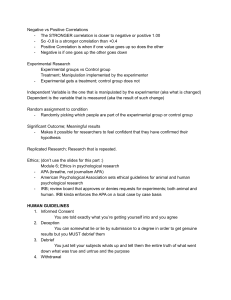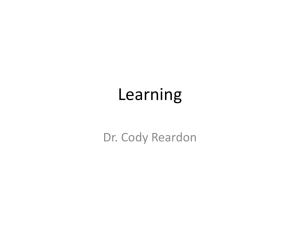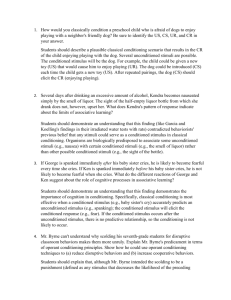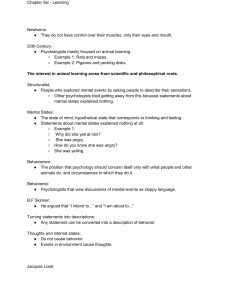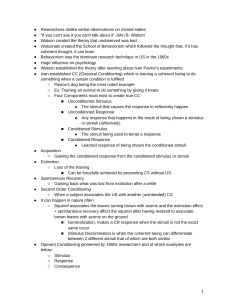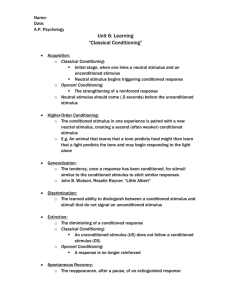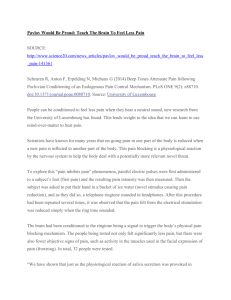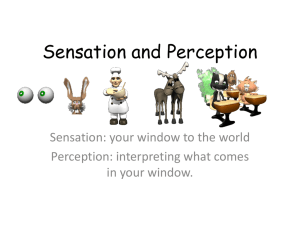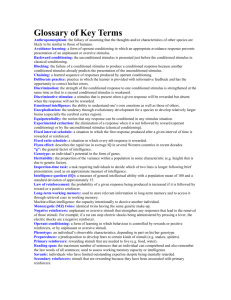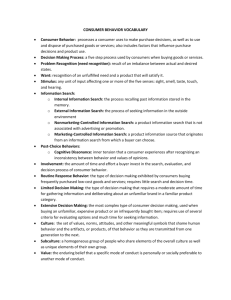Chapter 3: Consumer Learning: Perception
advertisement
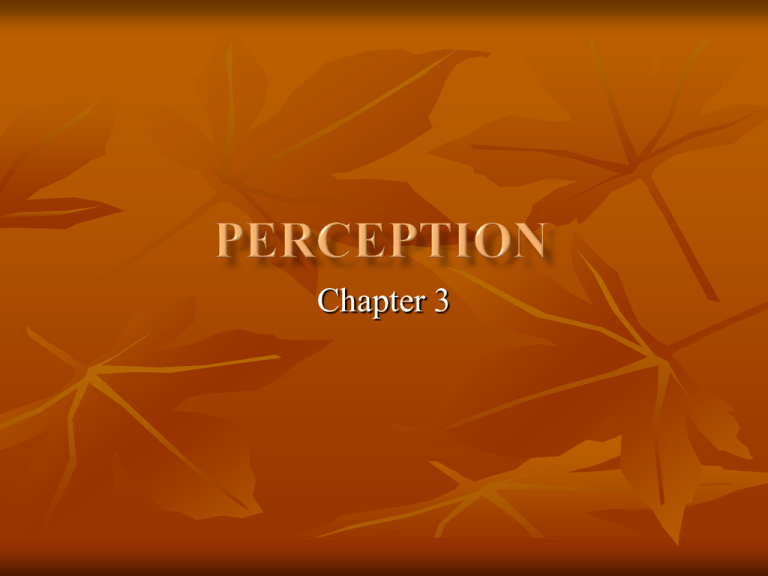
Chapter 3 What is it? Perception v. Reality Exposure Attention Comprehension Sensing Organizing Cognitive organization What if it cannot be processed? Assimilation Accommodation Contrast Reacting Source: www.foodnetwork.com Selective Perception Selective exposure Selective attention Selective distortion Subliminal perception Absolute threshhold Does it work? Source: www. timezoneoneblog.com Just Noticeable Difference Weber’s Law Just Meaningful Difference Mere Exposure Effect Implicit memory Explicit memory Product placement Source: www.worstproductplacement.com Attention Involuntary Orientation reflex Enhancing Attention Intensity Contrast Movement Surprising stimuli Size of stimuli Involvement Comprehension Importance Intentional v. Unintentional Learning Behaviorism “Focuses on changes in behavior due to association without great concern for cognitive mechanics of learning process” In English? Information processing “Focus on changes in thoughts and knowledge and how these precipitate behavioral changes” Unintentional Learning Classical conditioning “Change in behavior that occurs through associating some stimulus with another stimulus” Unconditioned stimulus Conditioned stimulus Unconditioned response Conditioned response Source: cwx.prenhall.com Unintentional Learning Instrumental conditioning “Behavioral response can be conditioned through reinforcement- punishment or rewards” Discriminative stimuli Shaping Punishment Negative reinforcement Extinction


